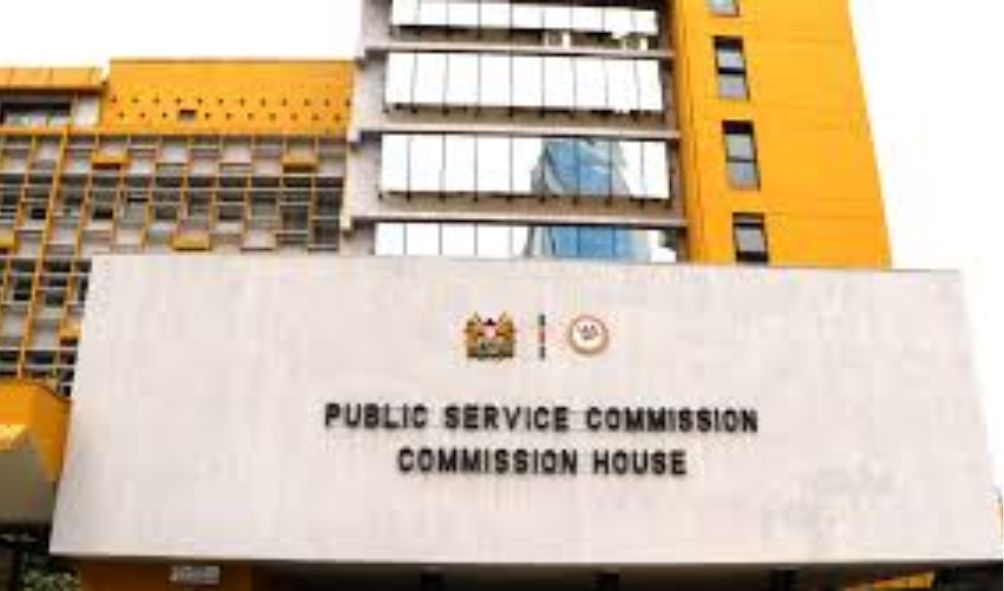Civil service has over 17,000 ghost workers; PSC report

The civil service has over 17,000 ghost workers benefitting from taxpayers’ hard-earned cash, a new report reveals
The civil service has over 17,000 ghost workers benefitting from taxpayers’ hard-earned cash, a new report reveals.
The report by the Public Service Commission shows thousands of individuals on the payrolls of numerous national government agencies do not actually exist.
State House – for the second year – KBC and Kenya Railways are among the top perpetrators.
“The staff recorded in the staff register exceeded the number of staff reported to be in-post against the authorised establishment by 17,000,” PSC said.
The new report comes in the wake of similar devastating revelations that ghost workers gobble up billions from counties. In 2023, it emerged that Kisii County had 1,314 ghost workers.
West Pokot had 2,300 non-existent workers while Kiambu had 2,299. The new report shows Kenya Railways had as high as 1,261 staff mysteriously in the payroll but not on the ground.
The review established that whereas the railways corporation had 3,287 officers in the bio-data, only 2,026 were in post.
Kenya Broadcasting Corporation had 231 officers who were in the national broadcasters’ register but not in any post, yet they draw salaries.
For State House, the number stood at 156, with the database recording 1,689 yet a headcount only revealed there were 1,533 staffers.
The PSC’s latest disclosures in the 2024 compliance report shows there were extra 17,000 members of staff against approved slots.
Ministries had the highest at 12,329, considering they had 60,228 staff holding positions yet staff registers had 72,557.
State corporations had extra 2,486 staffers, 1,885 at public universities, 225 at commissions and independent offices and 75 at statutory authorities.
PSC says it has directed the concerned agencies to explain the discrepancies in their employee data bases and the physical numbers.
“The institutions that presented inconsistencies in the number of staff in the bio-data against the list of officers on terms of service to explain the discrepancy,” the report reads in part.
Some 67 institutions that were sampled in the review, among them State House and Kenya Railways, had unexplained excess 2,326 staffers.
Another 103 had 3,354 more workers in the staff registers than those reported to be in post, while some 136 had no variances.
“This is the ideal situation where there is consistency between the authorised establishment and the detailed staff list,” PSC said regarding entities with no variances.
Meru University was found with 75 untraceable staffers, 21 at Kirinyaga University, 22 at the Broadcasting Department, 16 at JOOUST, and 27 at the University of Nairobi.
The Council of Governors was found with unexplained 26 staffers, 97 at the Blue Economy department and 57 at the Commodities Fund.
The School Equipment Production Unit had 31 ghost workers, 26 at Department of Investment, 15 at the National Housing Corporation, 10 at Lapfund, and 12 at Muhoroni Sugar Company.
Controller of Budget Margaret Nyakang’o has in numerous reports flagged the possibility of existence of ghost workers drawing salaries irregularly.
A recent review showed county governments paid staff more than Sh2 billion using manual payrolls in three months alone.
The national wage bill conference held by SRC last year resolved that all counties and ministries should migrate their payrolls.
The meeting, which brought together all government agencies, also resolved to bring an end to the use of manual, multiple and standalone payroll systems.
The latest PSC disclosures cast a light on the system the government unveiled last February to rid the payroll of ghost workers.
The government collapsed the integrated personnel and payroll system and replaced it with a unified human resource system.
Despite this, state departments paid 340 officers outside the payroll, 416 at public universities, 1,085 at state corporations, 76 at commissions, and 137 at TVETs. State agencies were given up to June 30 this year to sign up to the new system installed with a payroll module to manage civil servants’ salaries.
It is expected to accommodate mainstream civil service, county governments, and state-owned enterprises among other government agencies.
KNEC issues directive to schools to over collection of KCSE 2024 results printouts
We are not leaving the government for opposition – Waiguru to Mt Kenya residents
Universities now say they will not demand fees from first, second years students – Vice-Chancellors
CBK posts Sh24b loss on exchange rate fluctuations
Government announces mandatory UPI numbers and vetting for all workers
Inside Mugwandi Secondary School with one student and eight TSC teachers in Kirinyaga
Ghost workers present possibilities of taxpayers coughing out billions to inexistent staffers or have people whose roles are not clearly explained.
As the situation permeated, some agencies were found with excess staff beyond the approved establishment as others experienced excruciating shortages.
The review unearthed that most institutions (168) were over-established by more than half while others (335) had under-establishment.
The former had 5,100 excess staff, a chunk being at the State Department for Immigration which had 4,028 excess workers. Rongo University had the highest 417 extra staff followed by Kemsa, which had 231, with National Water Harvesting Authority in third place with 68 excess workers.
The Water department had 74 excess staff, 50 at the Energy department, 53 at Higher Education, and a similar number at the Agriculture department.
TVET, EAC, Diaspora Affairs, and Utalii College, were among entities that were over-established even as a chunk of state agencies had a shortage of 113,350 staff.
The shortages were most dire at Kenya Ports Authority (4,189), KMTC (3,908), Kenyatta National Hospital (3,108), Kenha (2,990), Kenya Power (2,891), NYS (2,683), Kenya Railways (2,640), Kenya Revenue Authority (2,547), KWS (1,861), Kenya Forest Service (1,590), and KUTRH (1,439).
Staff shortages were also reported at Kenya Pipeline, Postal Corporation, National Museums, KBC, and numerous public universities.
Overall, universities had a shortage of 18,410 staff, 28,367 at ministries and state departments, 2,443 at ODPP, NCIC, CoG, and another 2,657 in respect of commissions while state corporations collectively fell short of 61,473 staffers.
Also read,
More pain for Kenyans with new taxes set to take effect in February
Government reacts after Kenyans massively mail Dutch Ministry to stop royal visit
Government orders all social media companies operating in Kenya to open physical offices
Ruto must be re-elected in 2027 – UDA MP insists
Nairobi Commander Bungei, Spokesperson Resila moved in latest police reshuffle
DPP responds to reports of CS Muturi son being linked to money laundering
Follow us




